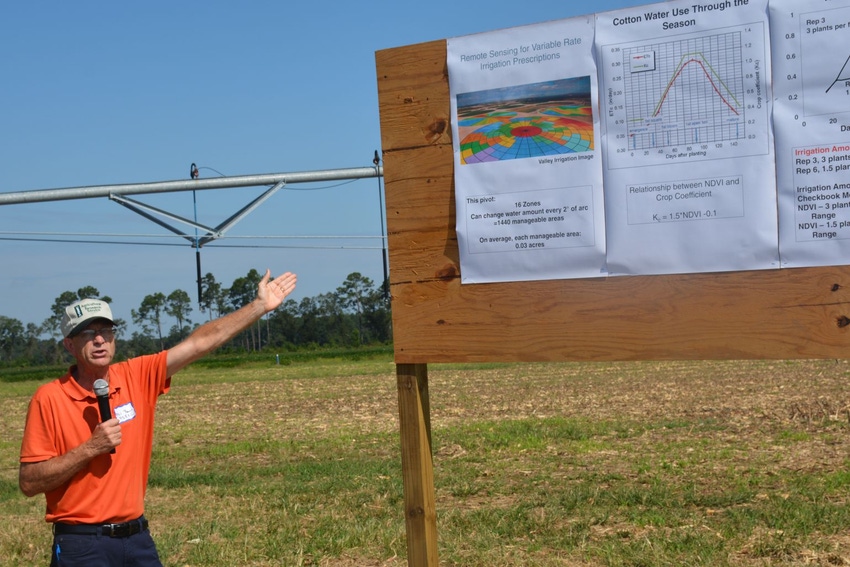
Variable rate irrigation holds great promise as a way to use precision agriculture to irrigate crops and better manage water, but the challenge is to find a way to write prescriptions to meet a crop’s specific moisture needs.
Phil Bauer, an agronomist with USDA’s Agricultural Research Service, who works out of the Pee Dee Research and Education Center in Florence, S.C, says the other big challenge is the cost of the technology. “We need to figure out how to write good prescriptions that will make growers money. If we can do that, they will be more open to using variable rate irrigation,” he says.
Bauer is conducting research on how variable rate irrigation systems can be used in South Carolina and other states. He talked about his research at the center’s field day Sept. 7.
In variable rate irrigation, the water rate can be changed as it goes around in a circle, both along the length of the pivot and as it moves through the field. Bauer showed field day attendees the pivot he uses in his research that has 1,440 manageable zones where different amounts of water can be applied.
“Part of the problem with variable rate irrigation and part of the reason we don’t really use it that much is we really don’t know how to write prescriptions,” Bauer said...” There are two ways we can write prescriptions. We can do what a static prescriptions. In the beginning of year, you look at a yield map, an aerial photograph and a soil EC (electrical conductivity) map. You then you put your water out through the year based on that static prescription map.”
The other method Bauer is using is a dynamic map to match irrigation prescriptions to what the crop is doing in the field. In his research, Bauer is measuring NDVI or the Normative Difference Vegetative Index of cotton and corn to determine when and where the crop needs water.
“NDVI can be measured in a lot of different ways, from satellites and drones, all the way down to hand-held sensors,” Bauer explained. “We determine how much plant material there is and determine how many leaves there are. We basically determine how much water the plants are going to use: the more leaves, the more biomass, the more water the plant will use.”
The goal is to use NDVI to find a crop coefficient and determine how much water is being used by the plants on a spatial basis. “We then use that to make our irrigation prescriptions,” Bauer says.
Bauer sees potential for variable rate irrigation, if the cost comes down to where it is affordable and makes a farmer money. “Precision agriculture allows for site specific fertilizer application and site specific irrigation that will help us save money and apply water when and where the plants need it,” Bauer said in a conversation with Southeast Farm Press following the field day.
“I don’t think variable rate irrigation will be used in every field. It will be site specific. But I think the technology is coming down the pike. We just need to find a way to make it pay,” he said.
About the Author(s)
You May Also Like






